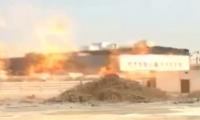Wilderness Watch recently objected to a Forest Service decision to allow permanent seismic monitoring stations in the Glacier Peak Wilderness in Washington state. If this decision doesn’t change, the Forest Service would fail to protect and preserve Glacier Peak’s wilderness conditions consistent with the 1964 Wilderness Act. Beyond Glacier Peak, any Wilderness – including those surrounding seismically-active Yellowstone National Park or elsewhere in Montana – would be damaged by the installation and servicing of any kind of permanent monitoring stations.
Wilderness is a uniquely American idea and ideal. We are incredibly lucky we still have some of it left. The framers of the Wilderness Act constantly reminded us that we would have to practice humility and restraint to keep it around. That means that all of us, visitors, managers, and other users, have to be willing to do things differently in order to preserve Wilderness for present and future generations. It’s not always easy, but it’s necessary. That’s why the recent proposal for permanent instrument installations raises concerns.
The 1964 Wilderness Act includes safeguards against permanent installations and structures in designated Wilderness, even if done for scientific purposes. Section 4(c) of this landmark law states, “…there shall be no temporary road, no use of motor vehicles, motorized equipment or motorboats, no landing of aircraft, no other form of mechanical transport, and no structure or installation within any such area.” (Emphases added.) The law therefore prevents the installation of permanent seismic monitoring stations in Wilderness as well as the landing of helicopters or use of any other motorized equipment to service the stations.
The Wilderness Act does provide a very narrow exception to allow otherwise-prohibited activities, but only where such activities are necessary to preserve the area’s wilderness character. To date, the Forest Service has utterly failed to prove that degrading the Glacier Peak Wilderness with permanent structures and installations, the landing of helicopters, and the use of any other motorized equipment is the minimum necessary for preserving the area’s wilderness character.
Wilderness Watch supports scientific research in Wilderness. It is one of the primary reasons for wilderness designation and one of its greatest values. Like other activities in Wilderness, however, scientific research has to be done in a way that protects the other values of Wilderness and doesn’t include those things that the law prohibits, such as the use of helicopters for access and the installation of permanent structures. In other words, like all other wilderness visitors, including Forest Service or other wilderness managers, researchers should walk or use packstock to access Wilderness and carry in their supplies.
Our organization also supports public safety and a better understanding of seismic activity. Warning signs of an eruption, which are usually detectable outside of Wilderness, tend to be normal for Cascade Range volcanoes. Such warning signs generally precede any eruption by a significant length of time. Increasingly, researchers are also able to monitor seismic activity remotely, even from satellites. But if monitoring must be done inside designated Wilderness, it must comply with the Wilderness Act and not degrade that specific Wilderness.
Unfortunately, the Forest Service typically does not analyze any alternatives beyond the proposals submitted by the US Geological Survey or other researchers. First and foremost would be the question of whether monitoring stations near or just outside the Wilderness could provide any useful monitoring data. These data may not be quite as detailed or complete as data collected from inside the Wilderness, but would likely be adequate. Unfortunately for the Glacier Peak Wilderness, the Forest Service hasn’t even looked at this sort of analysis.
This article has been excerpted from: ‘What’s Wrong with Monitoring Volcanoes in Wilderness’.
Courtesy: Counterpunch.org
Critics argue that strategy is vague, but closer look indicates strategic alignment with global trends and national...
To defeat it, we must distrust bot-driven narratives, to defeat it, we must verify sources before believing or sharing
Too often in emerging markets, digital innovation is treated as standalone goal, with risk relegated to afterthought
As in Pakistan lawfare’s impact and prevalence are increasing, situation is turning murkier
Number of traditions are associated with Eid, such as new clothes and giving and receiving of cash gifts as Eidi
Internationally, there have been misleading theories propounded about so-called slowing of Chinese economy







